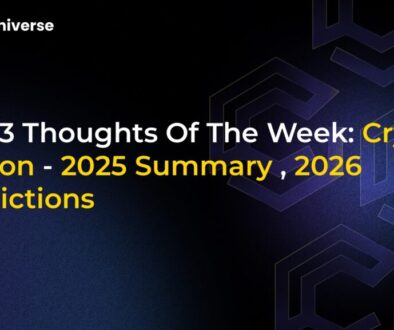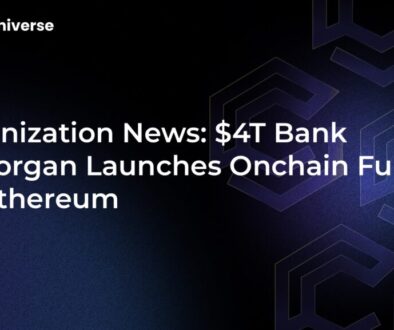ECB Advances Blockchain Integration in Financial Settlements

The financial world is undergoing a profound transformation, and at its forefront is the integration of blockchain technology. The European Central Bank (ECB) is not just observing this shift; it’s actively shaping it. With a forward-thinking dual approach, the ECB is set to integrate distributed ledger technology (DLT) transactions with central bank money, aiming to revolutionize and modernize Europe’s financial landscape.
This strategic move underscores the ECB’s commitment to fostering innovation while ensuring the safety and efficiency of financial infrastructures. By leveraging DLT, the ECB seeks to enhance the speed, transparency, and security of financial settlements, aligning with global efforts to harness blockchain’s potential while maintaining robust monetary control.
Pontes Initiative: A Short-Term Leap Towards DLT Integration
The first pillar of the ECB’s dual strategy is the Pontes initiative. This program is designed as a short-term solution, focusing on seamlessly connecting blockchain-based DLT platforms with the Eurosystem’s existing TARGET Services. TARGET Services are the backbone of Europe’s financial system, facilitating payments and securities settlements across the eurozone.
The primary goal of Pontes is to ensure efficient cash and securities flow by directly linking DLT platforms to these vital services. This direct connection is expected to streamline transactions and improve overall operational efficiency within the Eurozone.
Key aspects of the Pontes initiative include:
- Pilot Program Launch: A pilot program for Pontes is anticipated to commence by the third quarter of 2026. This pilot will be a crucial step in testing the practical implementation of the proposed integration.
- Insights from DLT Trials: The pilot will heavily incorporate valuable insights gained from the ECB’s extensive 2024 DLT trials. These trials involved over 50 experiments and engaged 64 participants, providing a comprehensive understanding of DLT’s capabilities and challenges in a real-world financial context.
- Future-Proofing Infrastructure: Pontes represents a significant stride towards creating a future-proofed, tokenized, DLT-based market infrastructure in Europe. It aims to pave the way for more advanced digital financial ecosystems.
By focusing on a short-term, pragmatic solution, Pontes seeks to quickly harness the benefits of DLT, laying a solid foundation for more ambitious long-term goals.
Appia Initiative: Crafting a Long-Term Vision for Global Operations
Complementing Pontes, the Appia initiative embodies the ECB’s long-term vision for an innovative and deeply integrated financial ecosystem within Europe. While Pontes tackles immediate integration needs, Appia is designed to create a cohesive environment that supports secure and efficient operations on a global scale.
Appia’s focus extends to analyzing broader DLT solutions and ensuring interoperability across different platforms and jurisdictions. This initiative is particularly geared towards facilitating global DLT-based operations, with a specific emphasis on international settlements and foreign exchange deals, which often involve complex cross-border transactions.
Highlights of the Appia initiative include:
- Global Reach: Appia aims to support secure global operations, addressing the complexities of international financial transactions using DLT.
- Focus on Interoperability: A key challenge in the DLT space is ensuring different systems can communicate and transact seamlessly. Appia will prioritize solutions that promote widespread interoperability.
- Collaborative Approach: Success for Appia hinges on robust collaboration between public and private partners. The Eurosystem will actively engage with industry stakeholders through market contact groups, analyzing DLT-based solutions and fostering a shared vision.
- Building on Exploratory Work: Appia builds upon the foundational exploratory work on wholesale central bank money settlement carried out by the ECB in 2024, leveraging prior research and development.
Through Appia, the ECB is not just modernizing; it’s envisioning a future where European financial markets are seamlessly integrated into a secure, global digital economy.
The Broader Impact: Modernizing Europe’s Financial Core
The ECB’s dual strategy with Pontes and Appia marks a pivotal moment for Europe’s financial landscape. This comprehensive approach demonstrates a clear understanding of DLT’s potential to transform financial settlements, moving beyond traditional systems towards a more agile, resilient, and interconnected future.
By actively exploring DLT applications in wholesale settlements, the ECB is taking a proactive stance in the global race to leverage blockchain for more efficient and secure financial transactions. These initiatives are not merely technological upgrades; they are strategic investments in the future competitiveness and stability of the Eurozone’s financial infrastructure.
The commitment to innovation, coupled with an unwavering focus on safety and efficiency, positions the ECB as a leader in the integration of cutting-edge technology into core financial operations. As the pilot programs progress and insights accumulate, Europe is set to build a financial ecosystem that is not only modern but also robust enough to meet the demands of a rapidly evolving global digital economy.


